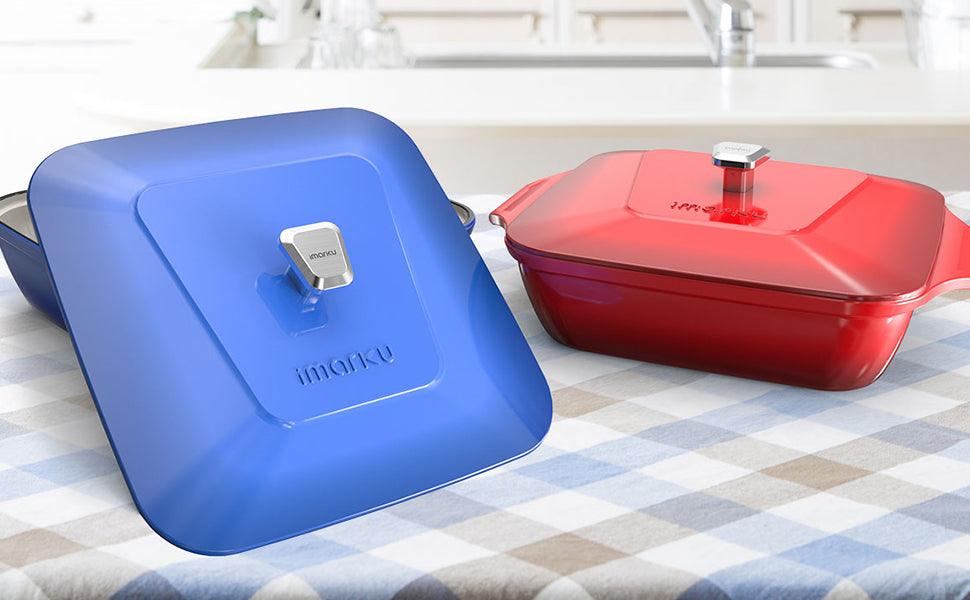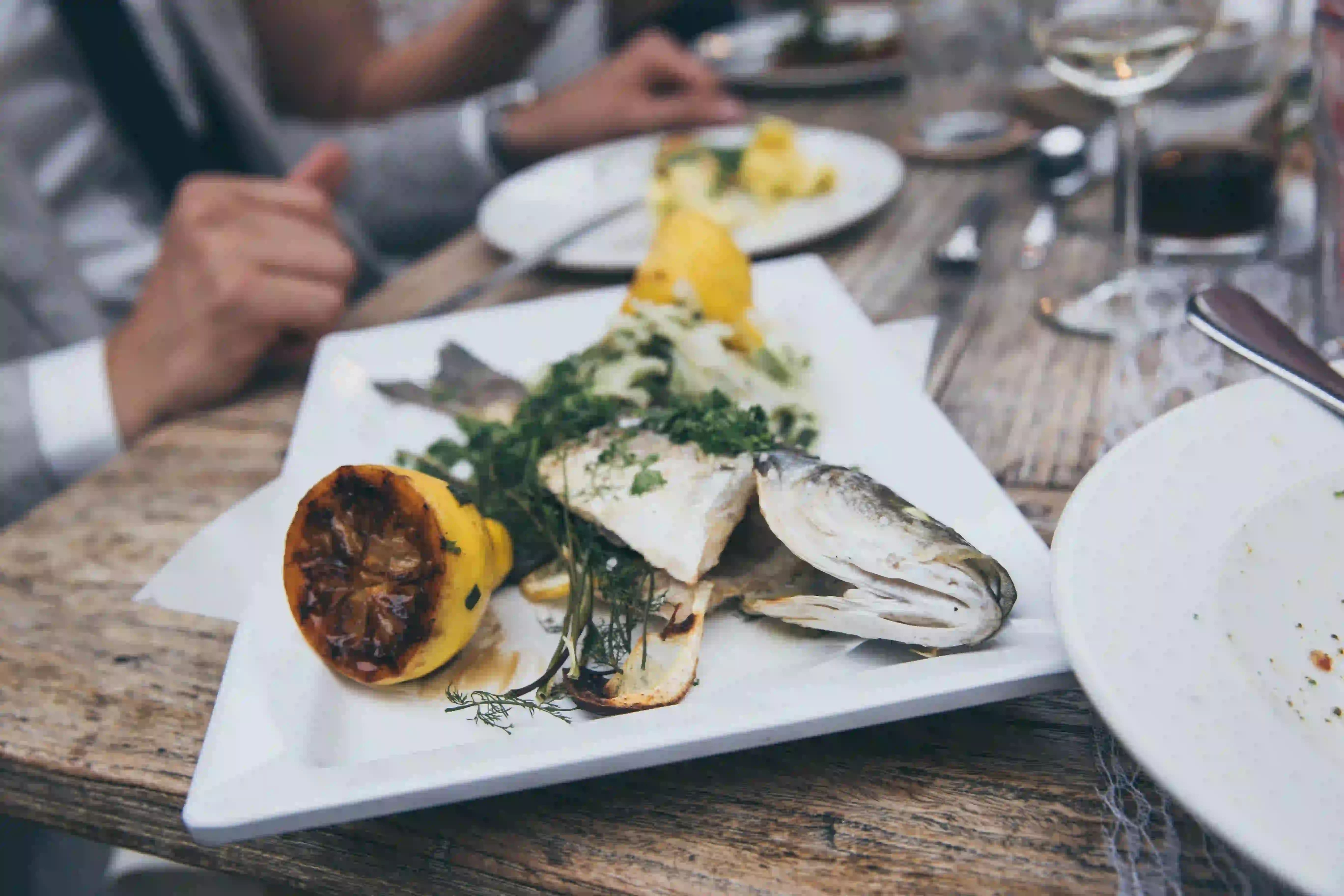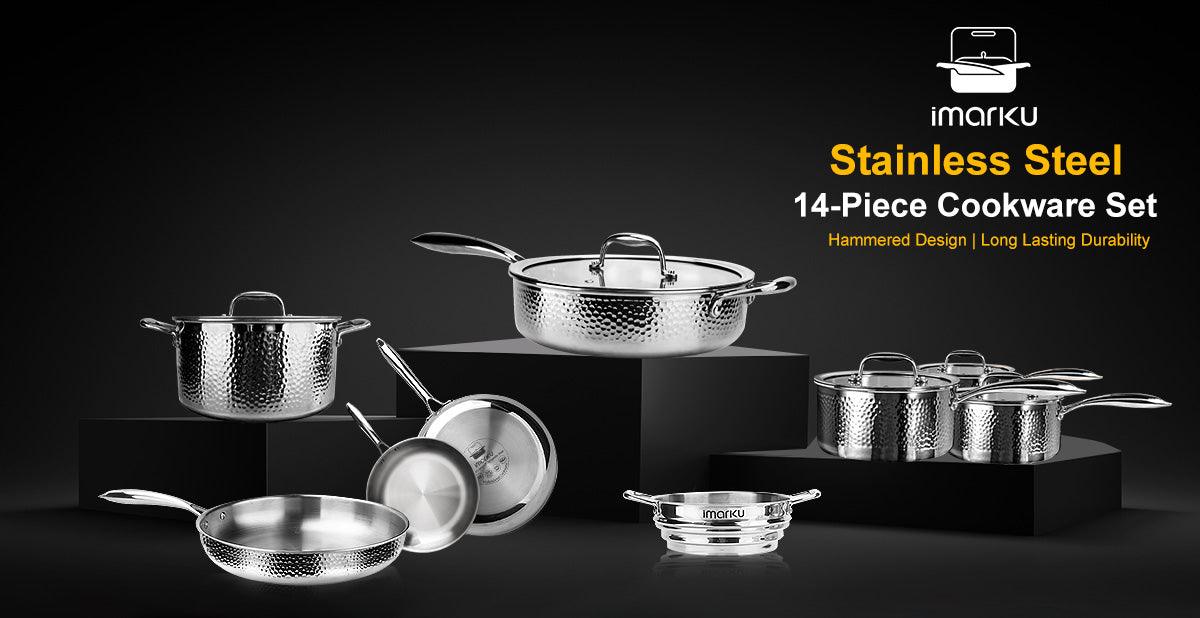TABLE OF CONTENTS
Most of you must be familiar with the dutch oven and some may be wondering what a cocotte is. In this blog, we will tell you the difference between cocotte vs. dutch oven even though they are quite the same at first look. The two are both well-known cookware for years but they have their own uniqueness when being used.
Dutch Oven
What is a Dutch Oven?
Dutch Oven is made of cast iron material but is not limited to it. There are dutch ovens that are made of stainless, aluminum, and steel.
It is not a literal oven that we use at home to bake pies or cookies. It is more like a pot with a thick wall around it, an attached handle to grip, and a tight-fitting lid.
Dutch Ovens can be used both indoors and outdoors. It is perfect when you will go camping with your friends and family.
Advantages of Dutch Oven
If you are wondering if it’s worth investing in having a dutch oven, well, let me give you some reasons to convince you why you need this cookware:
- Not all cookware is lightweight and fortunately, a dutch oven is one of the easiest cooking pots to bring wherever you plan to go. It is a must-have on the list if you are the kind of person who goes camping a lot.
- The sizes and ranges of dutch ovens are not limited. There are a lot of choices to choose from. If you are a minimalist, you can select a smaller size to suit your style.
- If you are into natural materials, dutch ovens are made of cast iron. It is a perfect healthy alternative to non-stick cookware and it has no chemicals on it.
- With its tight lid, it helps to preserve and keep the moisture of the dishes.
- The advantage of cookware made of an iron cast like the dutch oven is durability and sturdiness.
- Dutch Oven is not limited to baking alone but you can also cook soups on it, stews, and even casseroles.
- When you are always on the run and want to cook time as fast as possible, then the dutch oven is perfect for you. It helps to shorten the cooking time of the dishes. It’s the tight lid that helps to steam the inside and helps to make the food easier to cook.
- Dutch oven with its iron cast material can be cook not only on stovetops. You can also use it inside an oven and charcoals.
What Is a Dutch Oven Used For?
Dutch Oven comes with extreme heat induction. With this, food cooked in this pot is easier and faster. But don’t fret if you are not into fast-paced cooking. You can also take your precious time when cooking using the dutch oven.
Dutch Oven is usually used for searing, roasting, and sautéing. But not limited to that. You can also use this pot to bake pies, boil eggs, fry food, and even steam vegetables. Any kind of cooking is possible in the dutch oven. Learn more about dutch oven buying guide.
French Cocotte
What is a Cocotte?
Cocotte (also known as the French Oven) is a French name for dutch oven and it is made of iron cast material as it is base. It is much smaller compared to the dutch oven. It is coated with enamel made of cast iron.
Unlike the dutch oven, the cocotte is much heavier to carry even though its lid is heavy. But because of the heaviness of its lid, it provides consistent moisture for the food.
Cocotte also comes in various sizes such as heart shape, oval, and even rectangle.
Advantages of Cocotte
Like the dutch oven, there are advantages and benefits to having a cocotte at home. Here are some of them;
- You can use the cocotte for any kind of cooking. It has a heavy and tight lid that keeps the moisture and flavor of the dish you’re cooking.
- You can serve it directly on the dining table because it has a variety of colors. It won’t look shabby if you use it as a cookpot when you have guests at home.
- With its enamel coating, food will not stick to the pot.
What Is a Cocotte Used For?
Cocotte is similar to the dutch oven in that any kind of cooking is possible on it, like frying, boiling, braising, stewing, etc.
Cocotte is more often used for baking. It’s a small size that helps keep the baked food in shape. You can also do a deep-dish pizza on cocotte, bake pies, and even cinnamon rolls.
But cooking french food in the cocotte is still the best way to use it.
Differences Between a Dutch Oven and a Cocotte
As mentioned above, the dutch oven and cocotte are both made with iron cast material, both can be used for different types of cooking and keep the food’s moisture and flavor. However, there are still some differences between the two that will make you realize that they are not the same.
Maintenance
The Dutch oven needs to be seasoned before and after you use it. But not the cocotte, it doesn’t need seasoning. Hard abrasives are not allowed to be used when cleaning pure cast iron cookware.
Dutch Oven can be put directly into a flame but not the cocotte. When exposed to extreme heat, cocotte’s coating could chip and crack or even melt away. It is different from the dutch oven with a pure cast iron material.
Indoor and Outdoor Cooking
The Dutch oven is perfect for bringing when you do outdoor activities such as camping in the woods. Its durability to direct flame and heat is a good thing because you can cook outside even if you are using charcoal or wood.
Cocotte is safe to use in the oven and you can even put it inside a dishwasher, but unfortunately, you can’t bring this cookware on our outdoor endeavors. It is weak to extreme heat because of its enamel coating, unlike the dutch oven.
You should also not use the cocotte in a preheated oven, it will crack the pot. You can put some oil on the cocotte and put it inside a cold oven to avoid cracking.
The Durability and the Weight
The dutch oven’s durability is superior to the cocotte even though both are made with cast iron. Cocotte is coated with enamel that could easily crack or chip if it is not well taken care of.
You can’t use too much force if you use heavy ladles or a spoon. Cocotte is still fragile compared to the tough surface of the dutch oven.
The Dutch oven’s weight is much lighter than the cocotte. This means that the dutch are convenient to use when you need to move a lot when cooking. On the other hand, cocotte is heavy and bringing it from time to time or outdoor is not a good idea.
Designs, Shapes, and Sizes
Cocottes are the perfect cookpot to boast when you have guests during dinner at home. With its aesthetic beauty from its different colors and sizes and its porcelain enamel coating, you can confidently use and serve it at your dining table.
The traditional dutch oven gives a simple and old-style look. But the modern time dutch ovens come in different shapes and sizes that you could consider that it has their own aesthetic vibe.
The Lids
It is an obvious difference between the two. The lid of a cocotte has spikes on the inside while it is flat on the outside and stays in the same place. While the dutch oven’s lid is dome-shaped and smooth on the upper and inner sides.
How to Season a Cast Iron Dutch Oven?
The process of adhering oil is called seasoning on the cast iron cookware like the dutch oven. It helps to protect the cast iron, prevent it from rusting, and create a nonstick surface.
Seasoning a dutch oven especially if it's brand new will take one to two hours of your time. You need patience when you season a dutch oven.
Even though there are times when you purchase a dutch oven, it is ’pre-seasoned’ already, it is still safer if you season it again to avoid ruining the dutch oven.
When seasoning a brand new dutch oven, you will need aluminum foil, a baking sheet, a stiff brush, hot and soapy water, a clean towel, vegetable oil, and a paper towel.
When you have all the things you need to season your dutch oven, you can now proceed to the procedures:
- First, you need to line up the baking sheet together with the aluminum foil. You will stick it to the bottom rack of the oven. Now, preheat the oven to four hundred degrees.
- Now, you will scrub the dutch oven with hot soapy water and a stiff brush. After scrubbing, dry it with a towel.
- Apply some of it using a paper towel to the entire oven with the vegetable oil. Apply some to the lid, as well. Ensure that every corner of the oven has been wiped with the vegetable oil.
- Then, place the lid and the dutch oven o the upper rack of the oven, upside down. Bake it all for one hour. Take note that if there is smoke coming out, make sure to open the windows to have proper ventilation.
- Lastly, you can now turn off the oven when an hour is over and let the dutch oven cool down for about thirty minutes before you remove it from the oven.
That’s the way of seasoning the dutch oven. If you are not satisfied with the result, you can do the process once again until you get your desired finish. When you have completed the pre-seasoning correctly, you will not be disappointed because it will save you valuable time in the long run.
Remember, when the dutch oven has been used more often, its coating could deteriorate or rust. If the dutch oven has rust, use a special cleaner for the rust and then do the seasoning process.
Final Thoughts
To summarize. As you can read above, there are a lot of similarities between the dutch oven and a cocotte – and they also have their differences.
But both are useful cookware to have. You can interchange the two depending on the occasion. If you will do some outdoor activities and might want to cook the food yourself, the easy to carry around the dutch oven is the one you will need.
But if you stay inside your home's comfort and want to enjoy your alone time, you can use the cocotte. It has a smaller size than you can cook food good for one and that will also avoid having so many leftovers, right?
Both are excellent choices to use as well for one-pot dishes. Just throw all the ingredients you need for the dish and let the pot do its magic. It will save you time.
With the aesthetic beauty and style, the cocotte is good to have when you have special occasions at home while the dutch oven can stay behind the limelight and just be a helping pot for the cocotte if you still have more dishes to serve.
In the end, what suits you the best is still up to you. What’s important is the convenience and flexibility of the cookware depending on your situation. It’s your personal choice but you still have to consider what type of food you will cook, the amount of the dish you will prepare, what pot is safe for you to handle, your color choice, and what is within your budget.






















Leave a comment
All comments are moderated before being published.
This site is protected by hCaptcha and the hCaptcha Privacy Policy and Terms of Service apply.